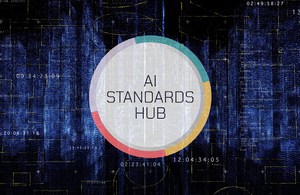
A cloud-native approach to application development based on an EDA, containers, and microservices allows businesses to offer innovative real-time products and services.
Industries such as banking, insurance, retail, healthcare, and travel that rely heavily on legacy systems face stiff competition from startups, and all must deal with increasingly demanding customer expectations. Using an event-driven architecture (EDA) can help.
Why? Companies in these industries must quickly develop new applications while still using their legacy systems’ critical functions and services. Increasingly, the way to accomplish this is to turn to a cloud-native architecture and expose the legacy system data and applications using APIs or other techniques. Essentially, the idea is to encapsulate a legacy system’s capabilities and present them as exposed services that other applications can then use.
Such a change is necessary due to the demands of modern application development cycles that force organizations to respond quickly to evolving conditions, new opportunities, and ever-changing customer preferences. New applications must be quickly developed and deployed, and frequently updated. Traditional legacy application development processes do not match such patterns.
Fortunately, could-native application development methods offer a path forward. A cloud-native architecture uses containers and microservices to construct and run loosely-coupled, distributed applications.
Containers offer a way for processes and applications to be bundled and run. They are portable and easy to scale. To that point, container images are ready-to-run software packages. They include the code and any runtime it requires, such as the application and system libraries. They can be used throughout an application’s lifecycle from development to test to production. They also allow large applications to be broken into smaller components and presented to other applications as microservices. And microservices provide the loosely coupled application architecture, which enables deployment in highly distributed patterns.
Using such an architecture, businesses get a highly dynamic system composed of independent processes that work together to provide business value.
Tying it back to the legacy systems
The days of monolithic application development have passed. The time it takes to write or re-code a massive application does not meet today’s fast-changing marketplace. And the available talent pool of people with the skills for such coding is dwindling. Many who are trained in the field likely started decades ago. Many are reaching retirement age. Younger colleagues are trained in newer programming and development languages.
Making legacy system data, services, and applications available via APIs in a cloud-native environment helps address these issues. The core applications do not need to be changed. And those core offerings can easily be integrated into new applications or complemented using additional data sources and newer technology (e.g., sophisticated analytics such as artificial intelligence or machine learning).
For example, a bank or financial services institution might want to move from batch processes for becoming a new customer or getting a loan approval to a real-time process. Similarly, a company may want to use new analytics for real-time fraud detection, compliance, or to improve customer engagement. The traditional approach would require writing and running the algorithms on the legacy system data in that environment. The cloud-native approach would simply cull the transaction data from the legacy system using APIs and run the algorithms elsewhere. The algorithms can be changed as newer, better predictive models emerge. And the efforts can easily scale up or down without impacting any other systems.
Where EDA comes in
As businesses strive to be more responsive and react in real time, they must incorporate events data and develop and deploy applications based on microservices and cloud-native architectures. An event-driven approach based on an EDA captures events and processes them immediately when compared with alternative approaches such as batch processing.
Event-driven solutions enable responsive applications, such as loan approval or payment processing in the financial services industry, that batch systems do not. Event producers publish events, ordered by time of creation, forming an event stream. The stream can be distributed across the enterprise, and consumers may subscribe to the various event streams and use all or only the events they’re interested in.
Organizations can make use of event streams in a couple of ways. They can perform stream processing, which is the continuous processing of an event stream (usually in real time and focused on a defined time window). They also can perform streaming analytics, a type of event stream processing that leverages machine learning to detect patterns, trigger actions, or produce other events. Use cases include real-time fraud detection and protection, customer onboarding, credit approval, and more.
Bottom line: In today’s always-on, instant-access-to-everything world, employees and customers demand quick responses to their queries and applications. Meeting these demands is a competitive differentiator. A cloud-native approach to application development based on an EDA, containers, and microservices allows businesses to respond quickly to market opportunities, leverage the strengths of their legacy systems, and offer innovative real-time products and services based on the data and applications of those systems.






